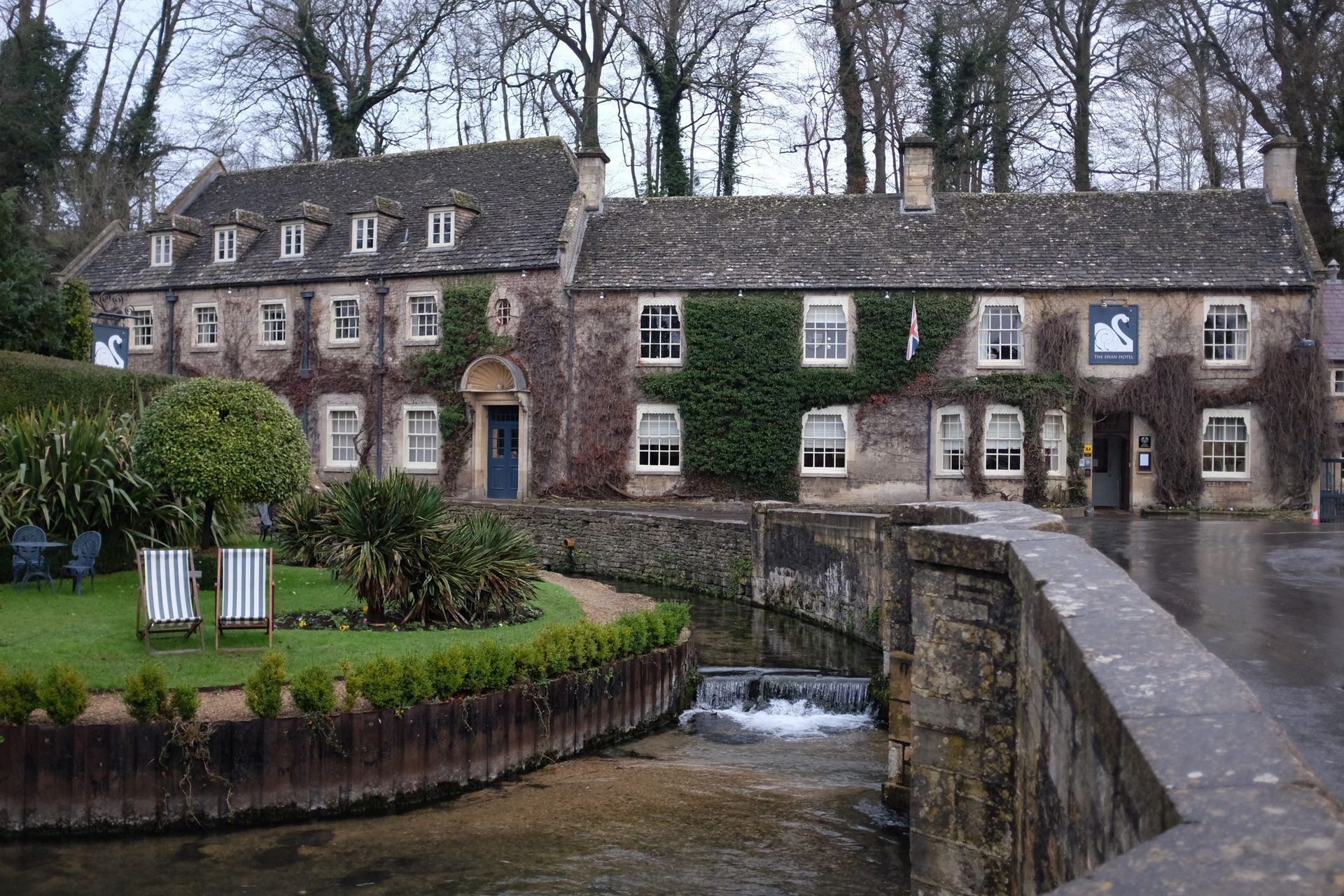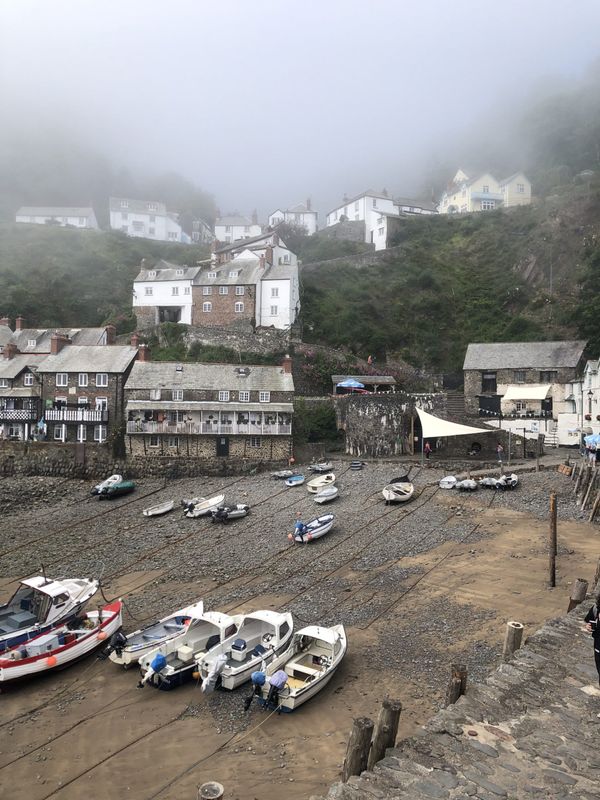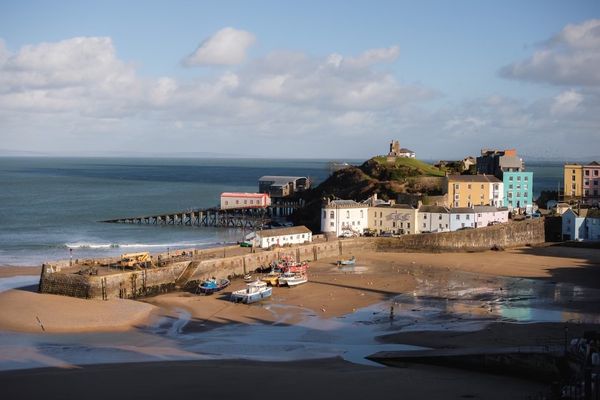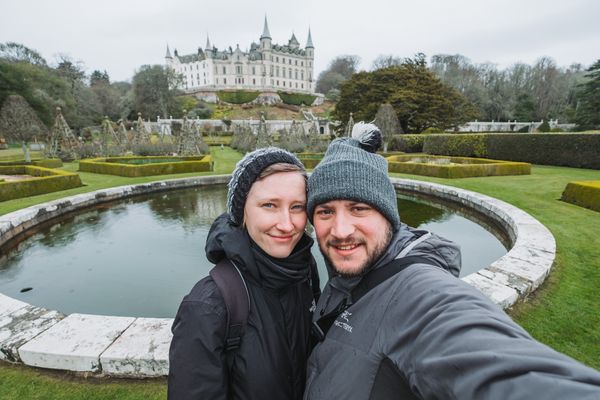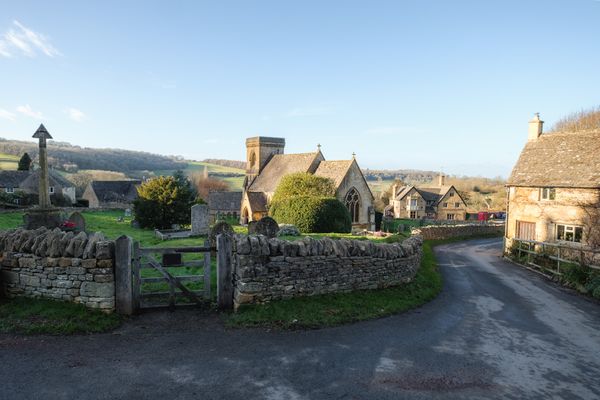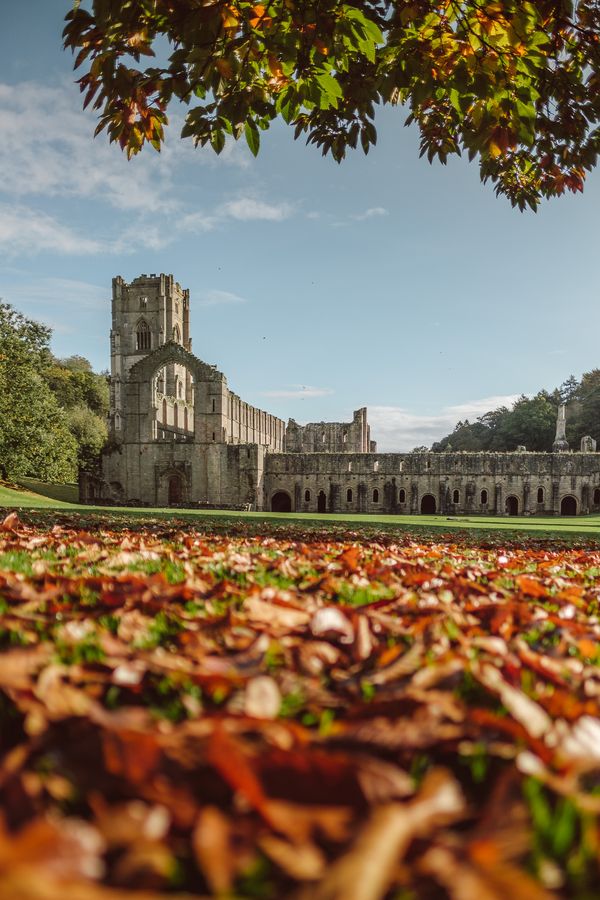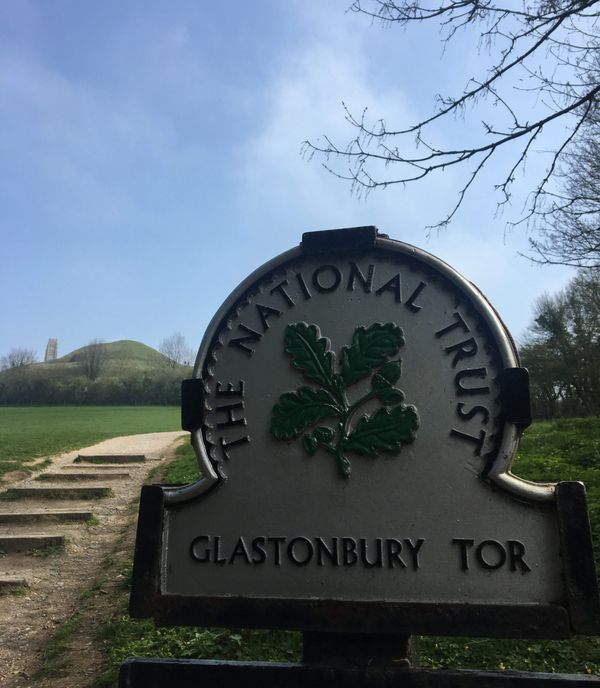The Cotswolds is an area that draws us back time and time again on our travels. The sleepy villages, typical Cotswold stone cottages and fresh countryside air make for the perfect British escape. The Cotswolds manage to be simultaneously frozen in time, with enough modern touches to make holidaying here comfortable and easy. We took a dedicated photography trip here in 2022 to capture all the famous sights, but we’ve been back many times since to explore more of this beautiful area! Here we’ll take you through everything you need to consider when planning your own trip to the Cotswolds. When you’re finished reading, check out our 48 hours in the Cotswolds post for more inspiration!
Table of Contents
When is the best time to visit the Cotswolds?
Depending on what you’re planning to do on your trip, you might want to consider the time of year you’ll be visiting. We first took a trip to the Cotswolds during a cold week in January 2022, and though it was chilly we found we had all the places we wanted to visit entirely to ourselves. This is the benefit of visiting in Winter – despite colder temperatures and some foliage not being out in bloom (for example, the picture-perfect climbing leaves on The Swan Hotel in Bibury), you’ll enjoy a much more peaceful trip. Being able to pop into a village, quickly find a parking space, and easily explore without hoards of tourists pushing past us was ideal, and we could enjoy each place at our leisure before cosying up back at our AirBnb.
To see the Cotswolds come into bloom, March-May is the best time to visit for Spring scenery. The arrival of Spring brings blossoming flowers and the return of village markets in quaint town squares, with longer and sunnier days to enjoy them. This time of year is popular for visitors without children, as you’ll be able to find lower prices on accommodation before the school holidays start and explore the quiet villages without the Summer rush.
Like anywhere in England, Summertime means every village and town in the Cotswolds is absolutely bustling with visitors soaking up the long sunny days. July and August are particularly busy months, as a visit during this time coincides with school holidays and it’s also a popular time for international visitors, meaning accommodation prices are higher. But if you can look past the crowds, you’ll be rewarded with lush green fields, alfresco pub lunches, and (hopefully!) warm sunshine. If you can, prioritise booking accommodation that’s central to a town or at least within walking distance to avoid competing with other visitors for the limited parking spaces.
We highly recommend visiting the Cotswolds in Autumn as the shoulder seasons provide a much calmer atmosphere. While the fields have been harvested and you might find yourself needing to pack a rain coat, Autumn brings the colour changes in the trees throughout the countryside and an excuse to hunker down in a cosy cafe or pub. Blackberries are ripe for picking, and the Cotswolds have them in abundance! Take a romantic stroll along one of the many footpaths and you’ll find hedgerows teeming with sweet berries.
How many days do you need to see the Cotswolds?
It is possible to do a whistle-stop tour of the Cotswolds over a weekend or a few days mid week, as we did during our first visit. We travelled to lots of little villages, from Bibury and Lower Slaughter to Castle Combe and Stow-on-the-Wold, choosing to drive around in our car for ease and to see as many different places as we could. It’s worth mentioning though, that as this 3 day trip took place in the first week of January, we weren’t slowed down by any traffic, queues or waiting times for cafes and pubs, and didn’t have to look too hard for a parking space in the smaller villages or photo stops.
If you’re planning to visit the Cotswolds during busier seasons, we’d recommend 5-7 days to be able to take the time to travel slowly around each village and truly experience this beautiful part of the country at leisure. Towns like Cirencester and Malmesbury are larger and have more to do and see, so you might find you need more than one day at each.
Where to stay in the Cotswolds
For one of our Cotswolds trips we booked an Airbnb just outside Chipping Campden to use as our base to explore, which was perfect as it was situated just a 3 minute drive into Chipping Campden and a 9 minute drive from Broadway. If you’re willing to self-cater, we’d highly recommend using Airbnb (or any independent B&Bs) as your form of accommodation – just make sure there is a parking space included if you’ll arrive by car. Instagram-famous hotels such as The Manor House in Castle Combe and The Swan in Bibury have restaurants on the property and breakfast options, should you not wish to spend your trip in the kitchen in between sight-seeing.
B&Bs and hotels in the centre of Cotswolds towns and villages will mean you can explore your immediate surroundings without needing to drive. Unless you want to rely on public transport it makes sense to stay in a place that you’re most looking forward to visiting. We recommend planning which towns and sights you want to visit first, then finding accommodation that is within easy drivable distance from each one. You don’t want to find yourself stuck staying in a cottage that’s 40 minutes drive away from all the sights, no matter how idyllic or romantic that cottage is.
For those with a motorhome or campervan, like us, there are a number of ideally-located campsites that offer easy access to popular sights. Depending on your camper/motorhome set up, and whether you have a separate car for getting around, you’ll need to find a campsite that suits your needs. Some highly rated campsites include Cotswold Hills Country Park (3 minutes drive from Chipping Norton), Cirencester Park (in the centre of Cirencester), and Bredon Vale (13 minutes drive from Broadway). If you’re a fan of the Amazon Prime show Clarkson’s Farm, you might want to consider staying at the Chipping Norton Camping and Caravanning Club Site – it’s just a 2 minute walk from the Diddly Squat Farm Shop!
Getting around in the Cotswolds
The easiest way to travel to, and around, the Cotswolds is by car. Navigating the limited public transport or arranging taxis will be difficult, as certain villages aren’t easily connected, and the cost of these journeys will make your trip a very expensive one! You’ll find yourself spending a lot of the day travelling between each place, taking up valuable time on your trip. You may find that you’re not able to visit every place you had in mind, just because it will take longer to travel to each one. Still, you can travel to the main cities near the Cotswolds and then use the bus services or ample footpaths linking the cities to popular Cotswold villages.
The main towns in the Cotswolds such as Cirencester and Winchcombe have car parks, though these fill up quicker in Summer. Be prepared to walk further from your parking spot in the smaller villages as parking can be hard to come by. Make sure the area you’re parking in isn’t a resident-only area, and never park illegally or in a way that will block traffic. The popularity of the Cotswolds has increased immensely over the past few years, and it’s best to make sure you’re not giving the locals a bad impression of tourists as you may find on your next visit they’ve reduced access to visiting traffic.
If you can’t get around by car in the Cotswolds, but would like to travel from place to place quickly, choose pedal power! As well as public footpaths that are perfect for walking between villages, the Cotswolds has a great network of cycle routes and you’ll be able see a lot of the area without the need for a car.
The best places to visit in the Cotswolds
The Cotswolds truly has something for everyone, whether you’re looking for a romantic getaway, a walking trip, a family holiday or a historic tour. It’s a prime location for content creators, with so many quintessentially British sights to see that make the perfect backdrop for a photoshoot. Depending on what kind of trip you’re planning in the Cotswolds, different places will suit different needs. Here’s a quick rundown of a few of our favourites:
- Broadway. For those that love a quaint shopping town, head to Broadway for country boutiques, tea shops, art galleries and restaurants. Away from the main shopping road, take a stroll along the pretty streets to picturesque Cruck cottage. If you think it looks like a dreamy place to stay you’re in luck – this beautiful thatched cottage is available to rent for holidays!
- Bourton-on-the-Water. One of the top highlights on our trips to the Cotswolds, Bourton-on-the-Water is known as the Venice of the Cotswolds due to its picturesque bridges over the river that runs through the village. Take a stroll over these old stone bridges and make friends with the ever-hungry resident ducks, grab a handmade sausage roll or hot chocolate at the Bakery on the Water artisan cafe, and head down the footpath leading to Lower Slaughter to admire the famous Old Mill.
- Cirencester. The largest town in the Cotswolds, Cirencester paints a picture of idyllic Cotswolds living with its old-fashioned shop signs, vintage cars lining the streets, blooming flowers and famous Cotswolds brickwork. We love heading to Cirencester Park for a good, long dog walk in a beautiful setting! Afterwards, head to KNEAD bakery for the most delicious pastries – you have to try the raspberry and pistachio bun!
- Snowshill. For somewhere equally picturesque, but much less bustling, head to Snowshill for postcard-perfect scenery. The population of this village is around just 164 making it a peaceful place to wander and admire the quaint cottages. The idyllic St Barnabas Church may look familiar to film fans, as it features in a snowy scene in Bridget Jones’ Diary.
- Stow-on-the-Wold. Home to the famous doors on the side of St. Edward’s Church that are said to have inspired J.R.R. Tolkien’s ‘Doors of Durin’, the gateway to the elven kingdom of Moria, in The Lord of the Rings. We highly recommend a stop at Lucy’s Tea Room – nab the window seat if you can – to enjoy a cuppa and a slice of cake while people-watching across the market square.
To read a more in depth overview of the different places we recommend you visit in the Cotswolds, head to our 48 hours in the Cotswolds post.
Points to consider
A few general tips to help you make the most of your visit to the Cotswolds:
Get out early. We highly recommend getting up and out each day of your holiday in the Cotswolds, and not just to see as much of this gorgeous part of the country as you can! You’ll find the more popular spots can get incredibly busy, especially in the Summer, and you’ll also realise it can take longer than anticipated to get from place to place. Some walks along footpaths between villages took us longer than we’d planned simply because we kept stopping to admire our surroundings, while in other towns we found it difficult to find a parking spot. Some places were unexpectedly dreamy and we spent far longer than we’d allowed for exploring – like Bourton-on-the-Water, known as the Venice of the Cotswolds due to its picturesque bridges over the river. Other villages didn’t live up to our expectations after being awestruck by prettier ones, so we didn’t spend as much time there. Make sure you enjoy your trip at a relaxing pace to take in everything the Cotswolds is famous for, by getting up and out early each morning.
Respect the locals. One thing that Instagram photos don’t show you is that many picturesque cottages now have ‘No Photography’ signs on their gates and doors. In some cases, like Arlington Row in Bibury for example, home owners have had to put locks on their front gates due to tourists trying to get a cute shot entering up their garden path. It was a real shame for us to see that this has now become a necessity in parts of the Cotswolds. We’re sure the residents are used to it by now, but it should go without saying that you should keep your distance if you are photographing homes, out of respect for the owners, and NEVER let yourself onto their property! Not everyone is so understanding of the relatively recent boom in tourism – consider just how many times local residents have unintentionally featured in tourist photographs that day!
Support local businesses. Where possible, it’s important to give patronage to the small businesses that keep the Cotswolds alive as a unique and characterful part of the country. As lovers of a good food pitstop to refuel during a day of exploring, we seek out independent cafes in villages and towns to help keep these places running, while getting to try new, delicious, handmade food at the same time! To find small businesses, most of the time we’ll simply type ‘cafe’ or ‘pub’ into Google Maps when we’re in a new area, and browse the results around us until we’re swayed by a picture of a particularly enticing cake or sandwich. Another way to support the locals is by heading to small, independent shops for one-of-a-kind items, if you’re someone who likes to pick up souvenirs and meaningful gifts. Even before you arrive, when booking your Cotswolds trip, you can support independently-run B&Bs and campsites. All these little actions add up and can impact the survival of these quaint British villages.

We are Chris+Suze
